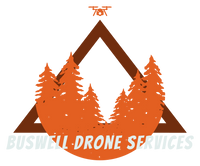Red Edge: The Early Warning Band
- Jonathan Buswell
- Sep 2
- 2 min read
In the vast world of agriculture and forestry, knowing how plants are doing is essential for increasing yields and ensuring sustainable practices. One of the most innovative tools available is the Red Edge band, a narrow slice of light found between the red and near-infrared (NIR) sections of the electromagnetic spectrum. Though it may appear insignificant, the Red Edge is a robust ally for farmers and land managers, providing critical insights into plant health.
The Red Edge band is particularly responsive to changes in chlorophyll levels, the green pigment essential for photosynthesis. When plants face stress—whether from drought, nutrient deficiencies, or diseases—their chlorophyll levels drop. This decline may not be visible to the naked eye, but the Red Edge band detects these changes, functioning as an early warning system to spot potential problems.

Understanding the Red Edge Band
The Red Edge band functions on the understanding that healthy plants reflect light differently than stressed ones. While the NIR band provides a broad perspective on a plant's overall light reflection, the Red Edge band zooms in on the initial signs of distress. This makes it an invaluable tool for precision agriculture, enabling farmers to tackle issues early.
For example, in vineyards, the Red Edge can identify vines struggling with nutrient imbalances even when the leaves look vibrant and green. This early detection allows vineyard managers to adjust nutrient applications quickly, ensuring that the vines receive the necessary elements to thrive.
Applications in Forestry
The advantages of the Red Edge band don't stop at farming; they extend into forestry as well. In forest management, this technology can identify trees under stress long before visible signs of decline appear. By keeping track of individual tree health, forest managers can take preemptive actions against stressors, such as pests or environmental changes, ultimately preventing larger issues.
Crop Management and Yield Optimization
For crop growers, using the Red Edge band can provide a competitive edge. With this technology, farmers can act quickly, applying fertilizers or irrigation where it's most needed. This focused approach not only saves resources but also boosts crop yield. By addressing stress at its onset, farmers can keep their crops healthy and flourishing throughout the entire growing season.

In summary, the Red Edge band is not merely a thin slice of light; it is a crucial ally in achieving sustainable agriculture and forestry. By leveraging its strengths, farmers and land managers position themselves to proactively tackle potential challenges, ensuring a healthier and more productive future for our crops and forests.
What’s Next?
But looking at bands alone only gets us so far. The real breakthroughs come when we combine bands into indexes that turn raw light into easy-to-read maps. Next up: the most widely used of them all — NDVI, the workhorse of vegetation monitoring.




Comments